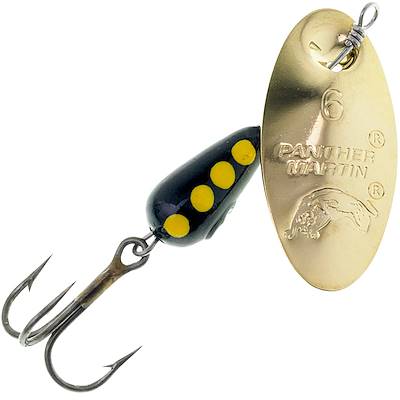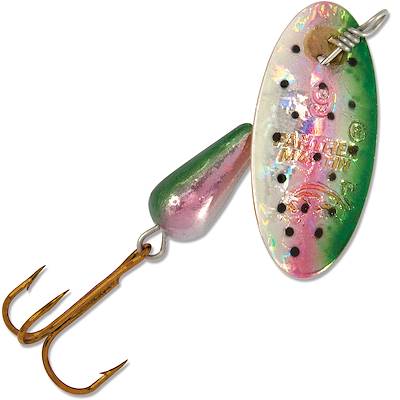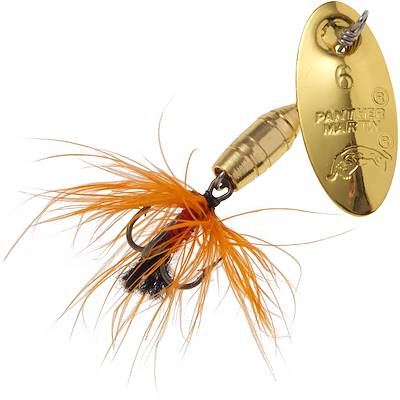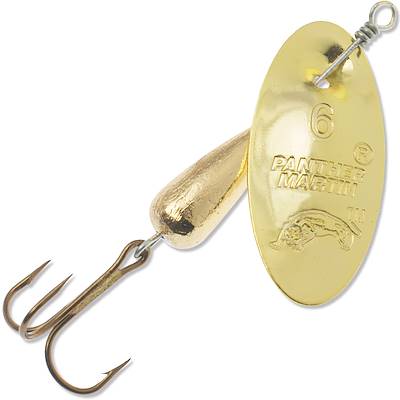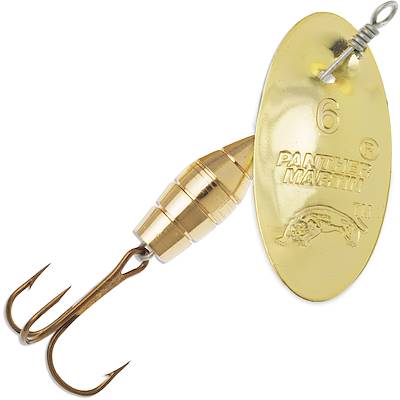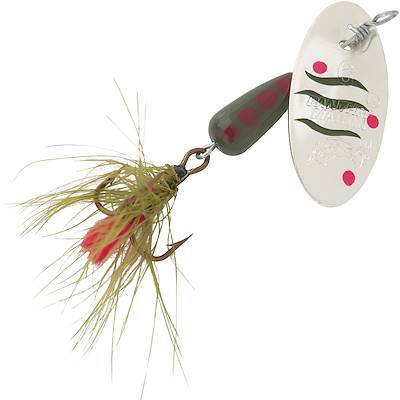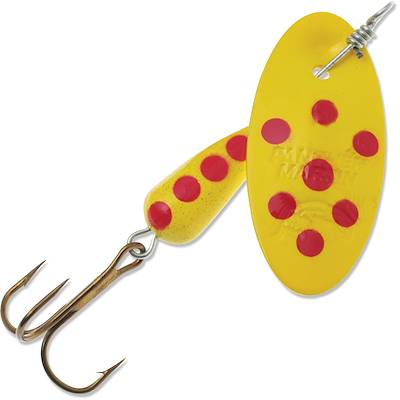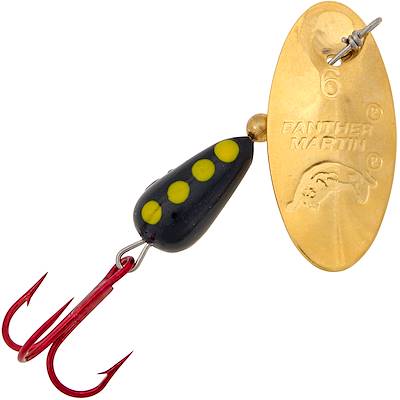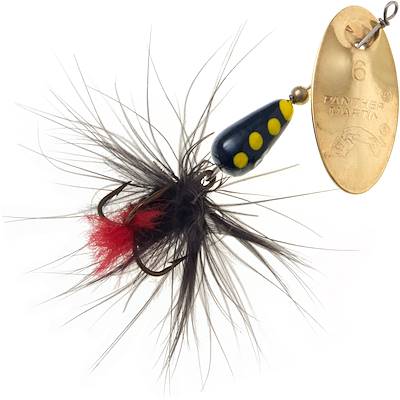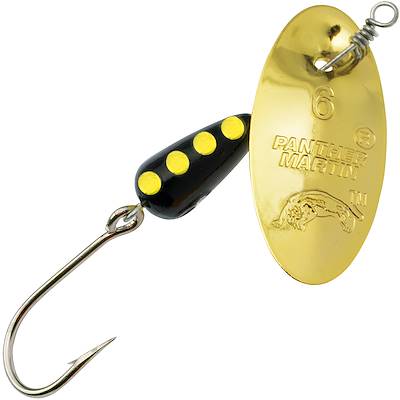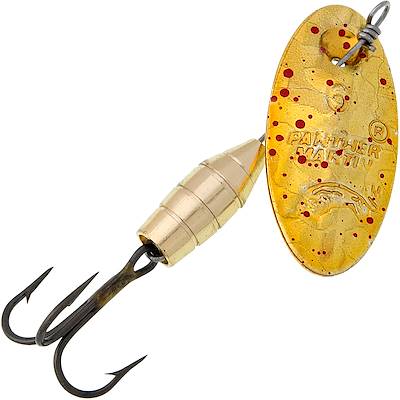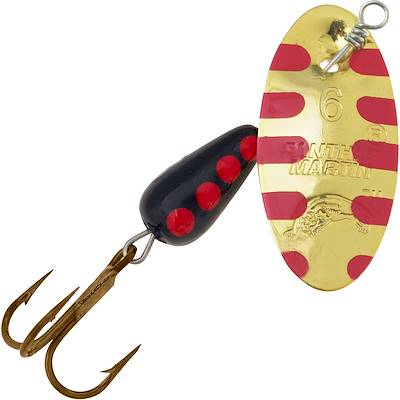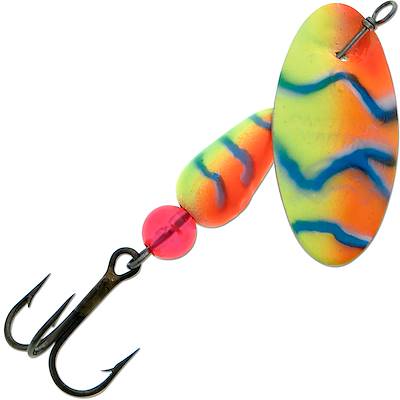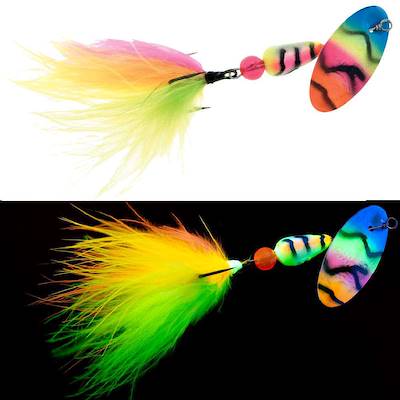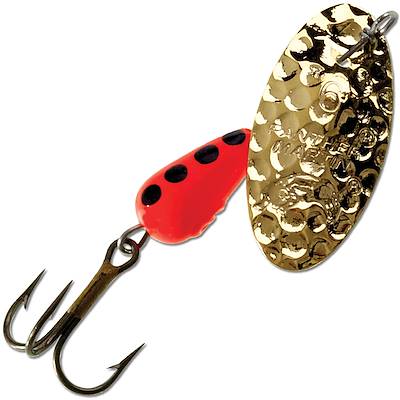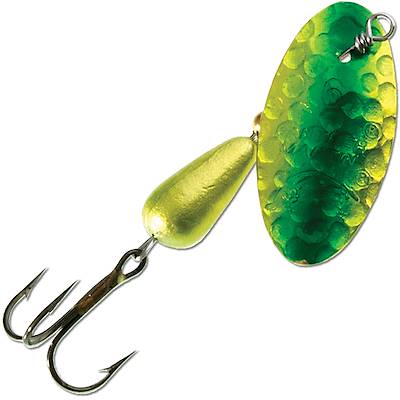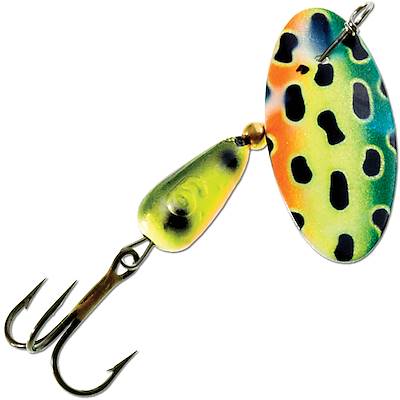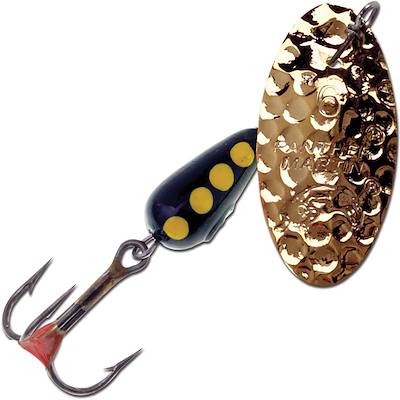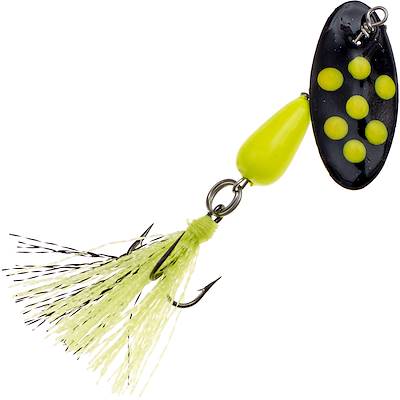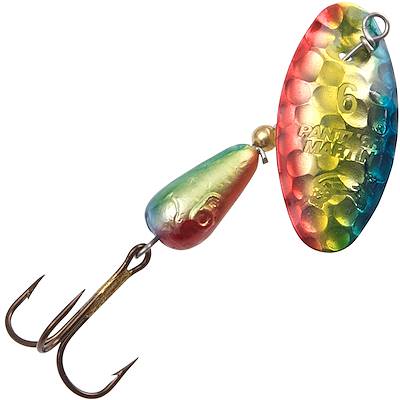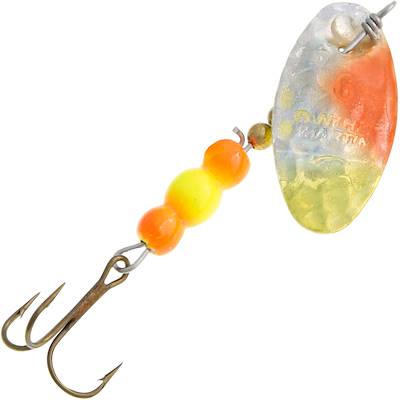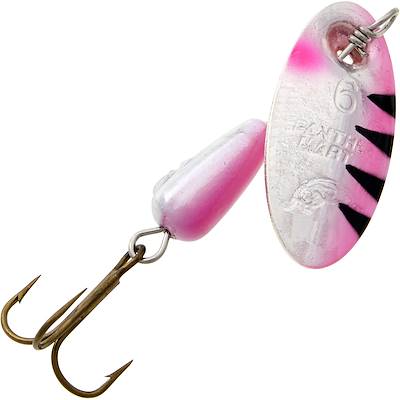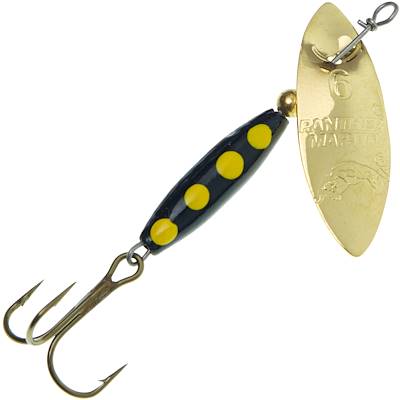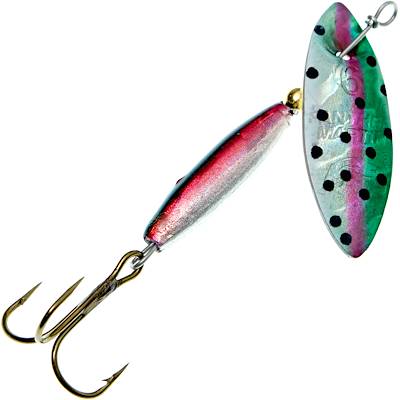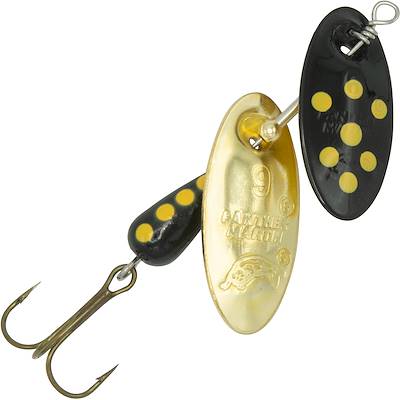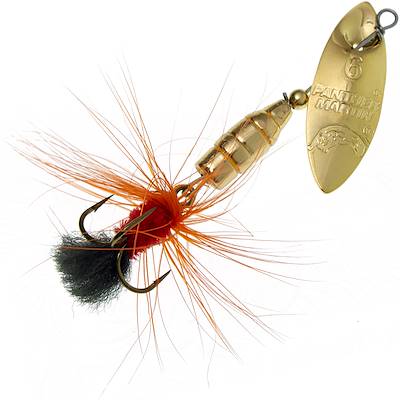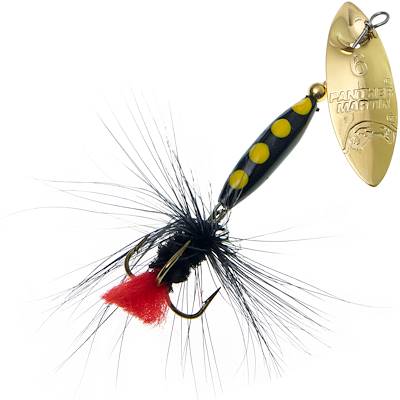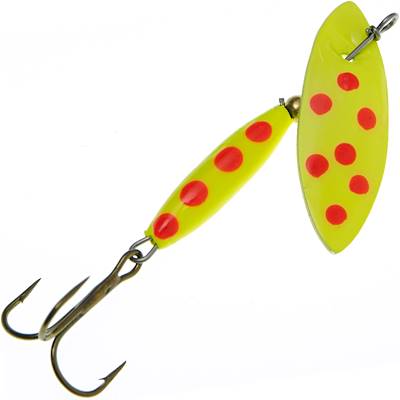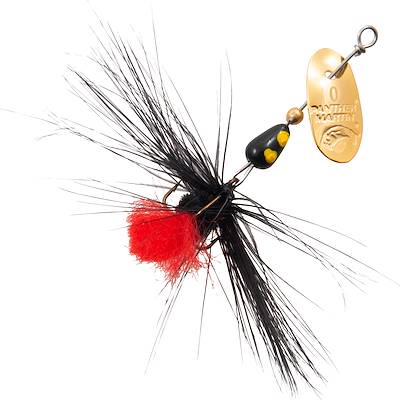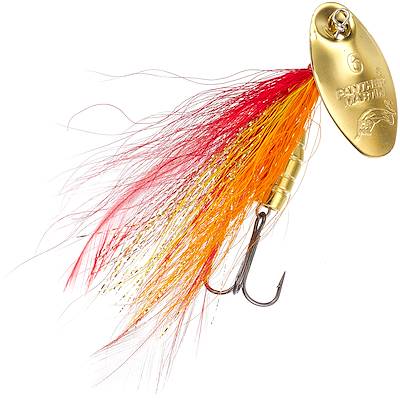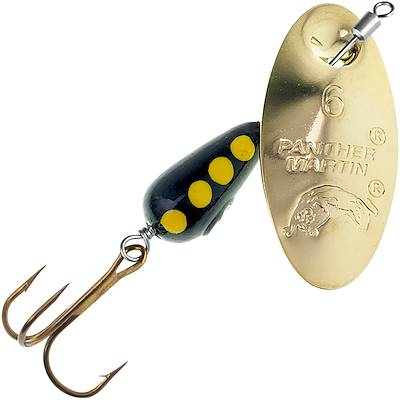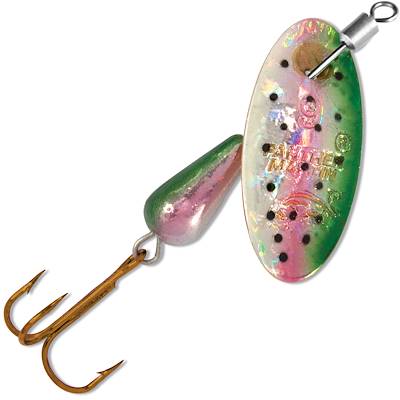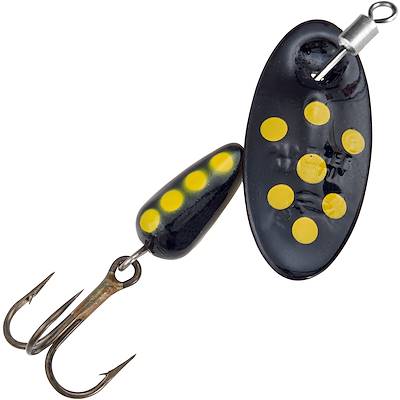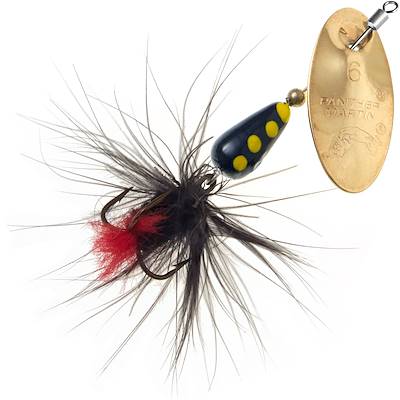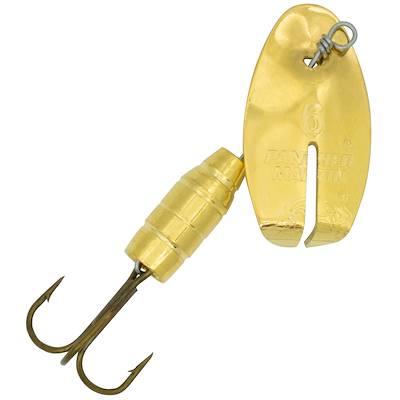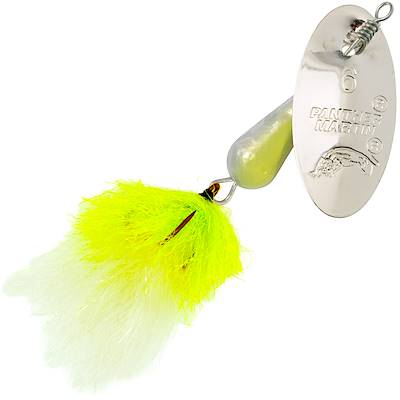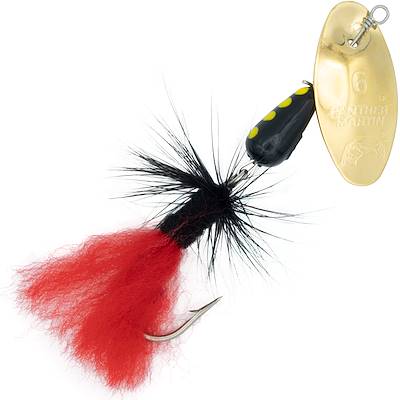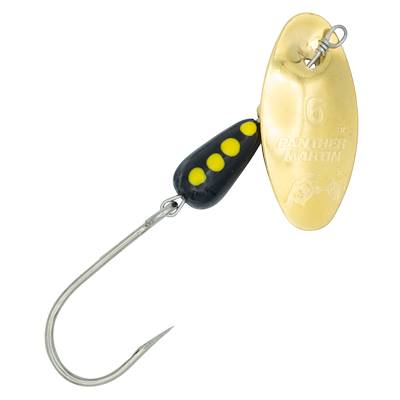Panther Martin Trout Fishing Guide
Trout
Introduction
Relatively shy, challenging to catch and especially good eating, the various members of the trout family are among the most popular game fish species anglers pursue. They thrive in rivers, streams, lakes and ponds across the world and are often heavily stocked to supplement naturally reproducing native populations. Rainbow, brown, lake, golden and cutthroat trout are typical representatives. Although not truly trout, members of the char family including brookies, Dolly Varden and arctic char are often considered in this category due to their trout-like appearance, habitat requirements and feeding tendencies.
As a rule, most trout species prefer cool waters, feed best during periods of low light intensity and have a strong tendency toward shyness. Target them early or late in the day when possible, and approach quietly while keeping a low profile in your boat or along the bank. Although they can be caught on a wide variety of baits, lures and flies, we’re especially pleased to report that most species of trout show an exceptional fondness for in-line spinners - Panther Martins in particular.
General Tips
- Trout respond quickly to intense colors, sonic vibrations and bright flash. Most species show a marked preference for Panther Martin Classic, Holographic and FishSeeUV in-line spinners.
- Early and late in the season, when waters run coldest, a slow retrieve generally works best. Increase retrieval speed as waters warm with the advance of spring or cool off in early fall.
- Fish slow and deep during mid-summer. At this point in the season trout hold in the coolest water they can find. Look for them at the head of deep pools, in the shade of undercut banks, and in the shadows of large rocks, boulders, ledges and overhanging shoreline brush.
- Under most conditions when using spinners a simple, straight retrieve works best for trout.
- Silver spinner blades are known to excite rainbows, lake trout, cutthroats and brookies while brown, golden and bull trout often favor gold blades. Panther Martin Holographic Red Hook spinners work especially well for brook trout, cutthroats, Arctic char and Dolly Varden.
- For stream and river fishing in strong flows, be sure to quarter the current in an upstream direction with each cast. Begin your retrieve as the current swings the spinner into the strike zone.
- Trout that live in lakes, ponds and slow-flowing waters prefer clear, open stretches. Look for them to feed over sandy, gravel or smooth rock bottom in areas unobstructed by heavy weeds.
- Because trout can be especially wary, dress to blend in with shoreline brush and surroundings. Bank fishermen should consider using waders or hip boots to increase access to productive water.
- Use size 1 and 2 Panther Martin spinners to work shallow waters and small trout streams. Use size 2 through 9 for deeper waters, longer casts or areas where large trout are known to lurk.
- Panther Martin All Gold (PMAG) and All Silver (PMAS) Classic Patterns in sizes 1 – 6 work for all species of trout under virtually any conditions. They make a great starting point when fishing new or unfamiliar waters.
- In low-light conditions or when fishing shadowed pocket water, Holy Hammered spinners make a great choice. Their holographic patterns and shimmering hammered brass blades reflect a lot of light, change colors in the water, and provoke vicious reaction strikes from fish looking for a last meal before sunset or the onset of foul weather.
- Most trout waters have a "secret combination" of colors that seem to always catch fish. Classic color pairs include yellow/black, red/yellow and black/fluorescent. Try the various Panther Martin Spotted spinner combinations to discover your local trout codes.
Meet the Hatch
- The currents in most streams create a repeating riffle-run-pool pattern. To maximize catches, note the water type holding the most fish and then concentrate your efforts on similar stretches.
- Riffles feature fast current and shallow water with rubble, gravel or boulders on the bottom. They produce best in the early morning and late evening.
- Runs are deeper than riffles with moderate current and a bottom consisting of small gravel or rubble. They will hold some trout almost anytime during the day if there is sufficient cover.
- Identify deep, lunker holding pools by their smooth surface and dark complexion. With slower current than other areas, trout fodder settles quickly settles to the bottom in these areas making them ideal feeding spots favored by medium to large trout.
- Look for the biggest trout to hold in deep bends, runs and pools where water flows slower than in main channels. Run a size 1 – 4 Panther Martin Classic or FishSeeUV spinner across the leading edge of deep water before probing the center or tailwaters of such pools.
- Small and medium-sized trout are often found in ripple areas and can offer fast, aggressive action. The chaotic flash of a size 2 or 4 Panther Martin Hammered spinner often draws exciting strikes in these waters.
- When feeding on emerging insects, the biggest trout often lurk near the bottom and wait for careless smaller fish to cross their paths. Match the hatch with a size 6 Panther Martin Classic or Holographic Rainbow Trout spinner.
- When stream waters hold a mix of rainbow and brown trout, expect smaller ‘bows to dominate runs and riffles while larger browns sulk in the deeper pools.
- When fishing in cold water during spring and fall, tip the Panther Martin spinner of your choice with a single wax worm, meal worm or corn worm.
- Slow-flowing streams and shallow ponds call for the smallest Panther Martin spinners to avoid snagging on the bottom. A size 1 or 2 Panther Martin Salamander spinner often works well in such situations, especially in West Coast waters.
- Pond trout can be caught throughout the year in most areas but are especially receptive in spring and fall. Focus your efforts where water temperatures range from 50 to 60 degrees.
- Big trout patrol the edges of clear water around inflows, outflows and deep pockets that are close to shore. Panther Martin Deluxe spinners provide extra casting distance and the perfect amount of flash to trigger strikes in these areas.
- When water temperatures are at cold or hot extremes, retrieve as slowly as possible while keeping the spinner blade spinning continuously.
- Use gold or copper blade spinners to tempt stocked browns and golden trout. Try silver blades for rainbows, cutthroats and brookies.
- When trout are rising on shallow flats, run a size 2 Panther Martin Regular Fly spinner can be a super selection when retrieved just below the surface.
- Following the conclusion of a substantial hatch in which trout were rising, retrieve a Panther Martin Dressed spinner two to three feet beneath the surface to tempt larger trout.
- When fishing in cold water during spring and fall, tip the Panther Martin spinner of your choice with a one-half to one-inch length of garden worm.
- For extra fish-attracting action, allow your line to bump against an extended index finger on your rod hand during the retrieve. The small shake this adds to the lure’s movement can cause following fish to quickly attack.
- Under low-light conditions like early morning, late afternoon or cloudy skies, the vibrant colors of Panther Martin Holographic and FishSeeUV patterns are highly visible and can draw additional strikes.
- Panther Martin Deluxe Holographic patterns feature a fish scale pattern on the blade and bright colors that create plenty of fish attracting flash under bright, sunny skies.
- In addition to river bends and deep pools, trout in rivers like to hold directly behind or in front of boulders, large rocks, bridge abutments and other structure that deflects current.
- In stiff currents, allow a Panther Martin spinner to swing into the strike zone. Holding the lure in place for several seconds before beginning the retrieve can draw strikes from cautious or heavily pressured trout.
- When trout stop rising to a noticeable hatch try working a Panther Martin Regular Fly spinner one to two feet below the surface to tempt large fish searching for one last bite. Choose a spinner color that matches the hatch as closely as possible.
- In clear, low water situations, dark colored Panther Martin Classic spinners are generally a good choice. Salamander patterns also work well, especially in West Coast waters.
- FishSeeUV patterns excel when trout are feeding on small minnows. Scientific studies show that many predator species use the UV spectrum to identify baitfish species.
- If large trout seem to be shying off brilliant FishSeeUV patterns, Holy Hammered spinners can change things up. Their blades reflect plenty of light and the holographic patters change color during the retrieve to provoke even trophy fish into reaction strikes.
- When working big, open waters or during flood conditions use heavier spinners to get down deep. Start with a size 6 or 9 spinner. Panther Martin Deluxe Dressed and Deluxe Speckled spinners cast well and sink quickly.
- In larger rivers, fish Panther Martin in-line spinners either upstream or up and across deep, fast water. Reel just fast enough to keep the spinner blade rotating as the lure sinks on the retrieve. Note that too slow a retrieve may result in snagging bottom while too quick a retrieve will cause the spinner to ride too close to the surface.
- Pools at the base of dams, bridges, spillways and culverts are classic big trout water. Look for the biggest fish to hold within shadow lines.
- A good pair of polarized sunglasses improves your ability to spot trout holding close to the bottom. Add a large brimmed hat or a cap with a bill to see even deeper into the water.
- When looking for trout in fast-moving water, watch for shadows on the bottom. Trout blend in exceptionally well with their surrounding but their shadows, being solid, are often easy to spot.
- When targeting trout from a boat it makes sense to keep moving. Cover as much water as possible while using your electronics to locate suspended fish, then use a count-down retrieve to position your lure at the proper depth before reeling. Allow one second per foot sink rate for Panther Martin spinners.
- Slow trolling is a great way to both cover a lot of territory and keep a lure in the water at all times. Troll two different types of similar sized Panther Martin spinners to see which one the trout prefer. For example, a size 6 FishSeeUV and a Deluxe Speckled spinner.
- In areas know to produce trophy trout, tip a Panther Martin spinner with 1/3 of a nightcrawler, half a garden worm or a small ball of Berkley Power Bait.
- On larger lakes, trout often cruise just off the bank immediately following ice out. Lake trout, especially, prefer shallow water at this time.
- During the early spring season, concentrate efforts around inflows, outflow, prominent points and dark water adjacent to sand bars. Use Panther Martin Deluxe silver, gold or copper spinners for rainbows, browns and brook trout. Use a Panther Martin Holographic Silver/Blue spinner for lakers.
- In murky, stained or turbid waters, Panther Martin spinners with black, chartreuse or albino bodies often work well. Dressed versions offer a little added bulk to interest bigger fish.
- Wary trout will often move to the side of an approaching small boat or kayak. Take advantage of this tendency by casting to the side and allowing your slowly moving vessel to pull the line straight before reeling in to cast again. Most strikes come soon after the lure has hit the water.
- Bass, panfish and walleye are known to feed on the windy side of a lake, but trout prefer the leeward side most of the time. That’s because trout prefer oxygen rich cool waters while warm, oxygen depleted surface waters often pile up on the windward side.
- When trolling spinners, use a 3 to 5-foot length of light fluorocarbon leader attached to the main line via a small barrel swivel. The barrel swivel helps prevent line twists and it adds a little bit of weight to help get keep the spinner down in the water column.
- For lake fishing, tip a size 6 Panther Martin spinner with a half-inch long piece of Berkley Power Trout Worm. The added scent is often enough to trigger strikes from following trout.
Trout Facts
- "Steelhead" trout are rainbows which spend most of their lives living in lakes or ponds but make significant spawning runs up rivers and streams on a yearly basis. During migration, their colorful appearance fades to a silver sheen and males often develop ferocious-looking hooked jaws.
- "Sea-runs" are freshwater trout that spend part of their lives in marine or tidal waters to which they have access. Like steelheads, the males develop hooked jaws and both genders lose their distinctive trout coloration and vermillion spots in favor of silver flanks. Rainbows, browns, brookies and cutthroats will all cross into saltwater estuaries if given the opportunity. Because marine waters offer expanded feeding possibilities, sea-run trout can grow outlandishly large.
- Although native to North America west of the Rockies, rainbow trout have been introduced to every continent except Antarctica. Brook trout are native to eastern North America. Brown trout, on the other hand, are not native to the Americas and were originally imported to the United States from Germany and the United Kingdom.
- Trout flesh varies in color. Based on diet and environmental conditions it can range from off-white to slightly pink, bright orange or even dark red.
- Most trout species typically live about seven years and begin spawning at age 2 or 3.
- Brown trout have between 38 and 42 pairs of chromosomes. Humans have only 23 pairs.
- Trout can see and focus out of both corners of each eye simultaneously meaning they can see in almost every direction at once
- During the salmon spawning season, Dolly Varden eat up to a one-quarter of their weight each day in salmon eggs. To do this, they grow several inches of additional stomach tissue which then fades away after the salmon spawn bonanza feeding period comes to an end.
Panther Martin Lures & Sizes for: Rainbow Trout
These Panther Martin Lure Families and sizes are best suited for catching Rainbow Trout











